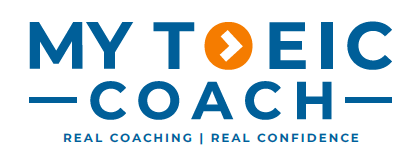The “Messy” TOEIC Test: How to Make Smart Decisions Without All the Answers
“There is no perfect decision. You just make the best move with what you’ve got.”
Ben Horowitz writes this in The Hard Thing About Hard Things.
He’s talking about leading a startup in chaos.
But if you’ve ever been stuck in TOEIC Part 5 or Part 7,
you know exactly how it feels.
You’re halfway through a question.
You don’t know every word.
The clock is ticking.
You hesitate.
“What if I guess wrong?”
“What if I miss something?”
And just like that — you’re trapped.
Welcome to The Over Thinker Block and The Speed Trap Block in one brutal combo.
But here’s the truth:
TOEIC is designed to be messy.
And you can still win.
The Test Is Messy — So You Need a Messy Decision-Making Skillset
At MTC, we coach this simple truth:
TOEIC isn’t about being perfect.
It’s about being effective in uncertainty.
Horowitz explains that business leaders often have to make critical decisions
without complete information.
Waiting for the “perfect answer” is how companies die.
TOEIC rewards the same mindset.
If you’re aiming for perfection,
you’ll lose precious time,
doubt yourself,
and panic as the clock drains.
But if you learn to make smart, calculated guesses —
you stay in control.
MTC Truth: You Don’t Need to Know Everything — You Need to Act with What You Do Know
In Part 5 and Part 7,
there will always be words you don’t know.
That’s not a failure.
It’s part of the game.
Top scorers don’t panic when they hit an unknown word.
They pivot.
They scan the sentence structure.
They eliminate obvious wrong answers.
They make a confident guess — and move on.
This isn’t “reckless guessing.”
It’s strategic decision-making under pressure.
ALT Habit: “Guessing with a Stop-Loss” — Making Confident Decisions Under Pressure
Here’s how to build this decision-making reflex:
What to Do:
When faced with an uncertain question (especially in Part 5 or 7),
give yourself a 10-second decision window.Eliminate one or two impossible options.
Make a best-effort guess based on sentence flow or known patterns.
Mark it and move on.
Stop-Loss Rule:
If after 10 seconds you still don’t feel confident,
force yourself to choose the best guess and cut your losses.
Why It Works:
It prevents time bleed. You stop wasting time on low-return questions.
It builds decision-making speed. You train your brain to process what’s there, not fixate on what’s missing.
It reduces emotional drain. You stay calm and in control, even in messy situations.
Making Smart Moves in Messy Situations is a Life Skill
Horowitz’s point is clear:
Success isn’t about always having the right answer.
It’s about being able to act when answers are incomplete.
TOEIC is a small version of this bigger life challenge.
When you train yourself to decide,
to stay calm in uncertainty,
you’re not just improving your test score.
You’re building a mindset that wins in business, career, and life.
The messy parts are where you grow.
Want to Learn More?
Our blog is full of practical strategies that help test-takers like you build better habits, overcome common blocks, and improve TOEIC scores through smarter, easier methods. Try our free TOEIC Block quiz now!
